Grow a Ton of Food Urban Farming in Your Neighborhood
I used to think I needed over an acre of land to have a decent farm, and our retirement ideas included starting a homestead. In the meantime, I began with a small garden on our 1/4 acre plot. A few years later, we also started raising chickens. We now grow more vegetables than we can eat, and get fresh eggs everyday from our little urban farm. It turns out that I didn’t need acres of land, I just needed to sharpen my skills and get creative.
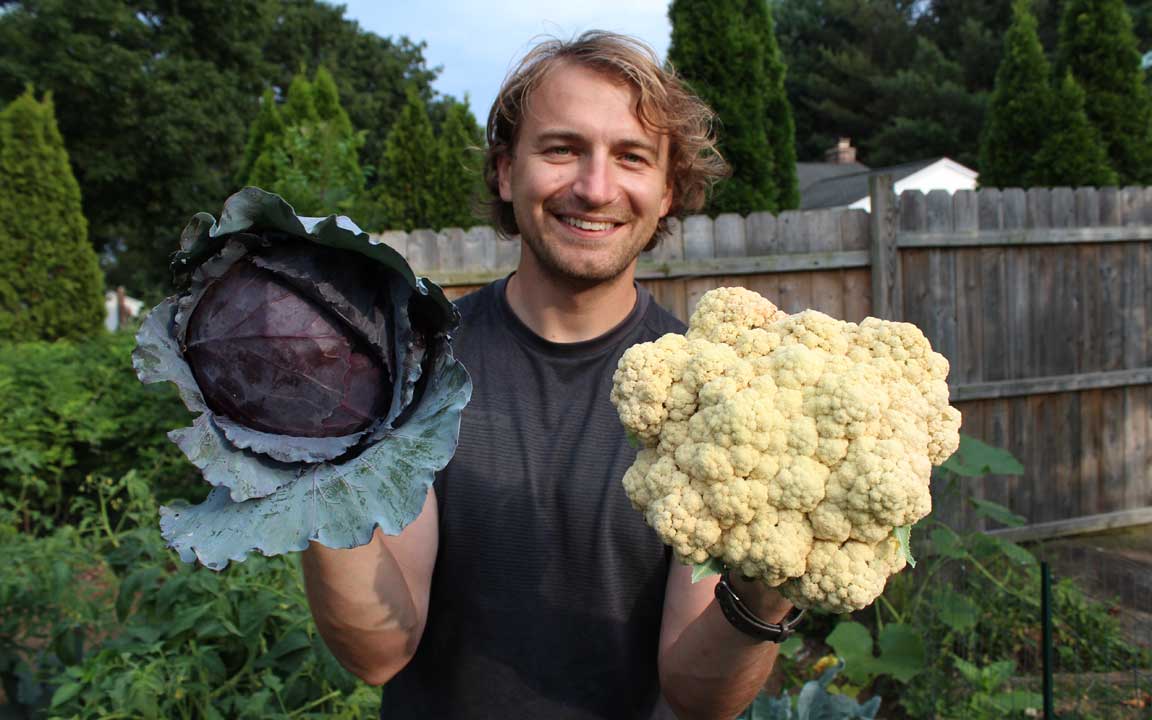 Fresh picked last week
Fresh picked last week
Learning to garden well takes practice
My grandfather made gardening look easy. He grew everything, and always had enough to store away for the winter. My first garden was far from productive. The yard was a dust bowl – there wasn’t a single earthworm to be found. To make things worse, I started with small raised beds and overcrowded everything. Not much came out of that first garden that the bugs didn’t get. Frustrated by my results, I nearly gave up.
A few years later, we got serious about our plans for financial independence and the idea of homesteading. I started doing more research, and picked up the book The Joy of Gardening (affiliate link.) This guy gardened like my grandfather. No raised beds, just doing what it takes to grow as much food as you can with as little money and land as possible. Reinvigorated, I tore out my old garden and plowed up a 25′ x 25′ area. That area has been expanding slowly and is now 25′ x 40′.
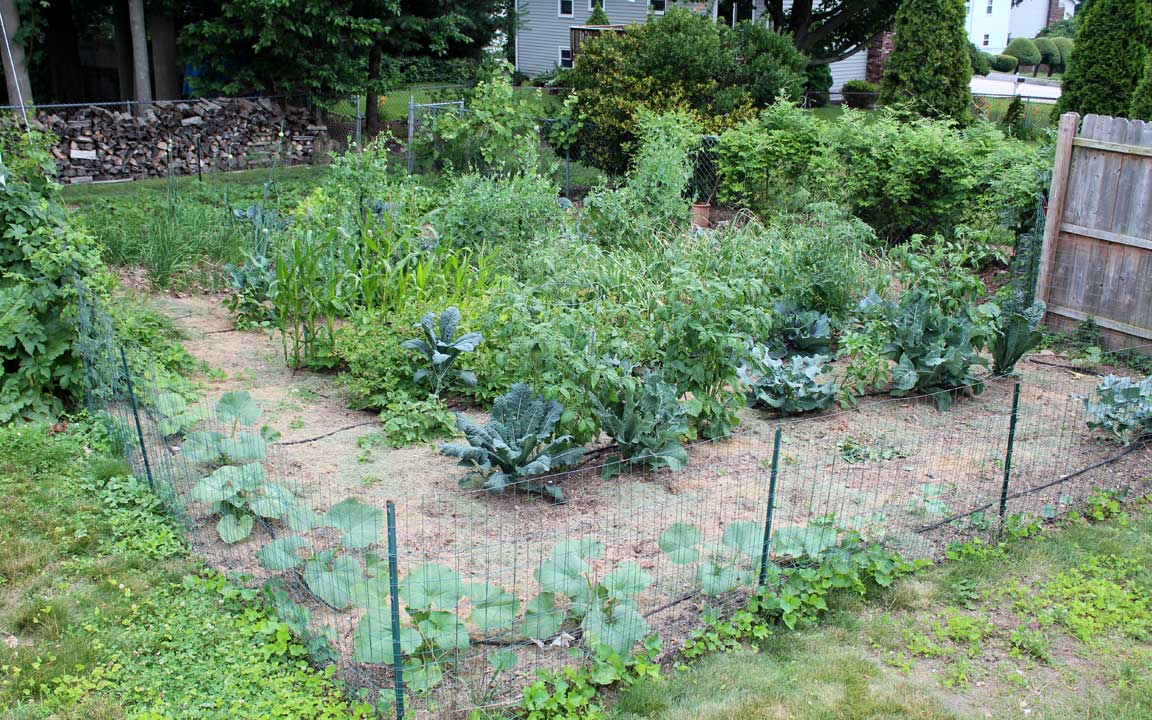 )Our garden has grown to 1000 sq. ft.
)Our garden has grown to 1000 sq. ft.
I made wide rows, gave my plants more space, put in automated watering, and started mulching with grass clippings to keep the water in and weeds out. Most importantly, I set about improving our soil. It was acidic, so I put down lime and spread ashes from our wood stove to help balance the pH. Throughout the year, I add organic matter like leaves, grass clippings, and compost. I keep getting bigger harvests, and hardly use any fertilizer.
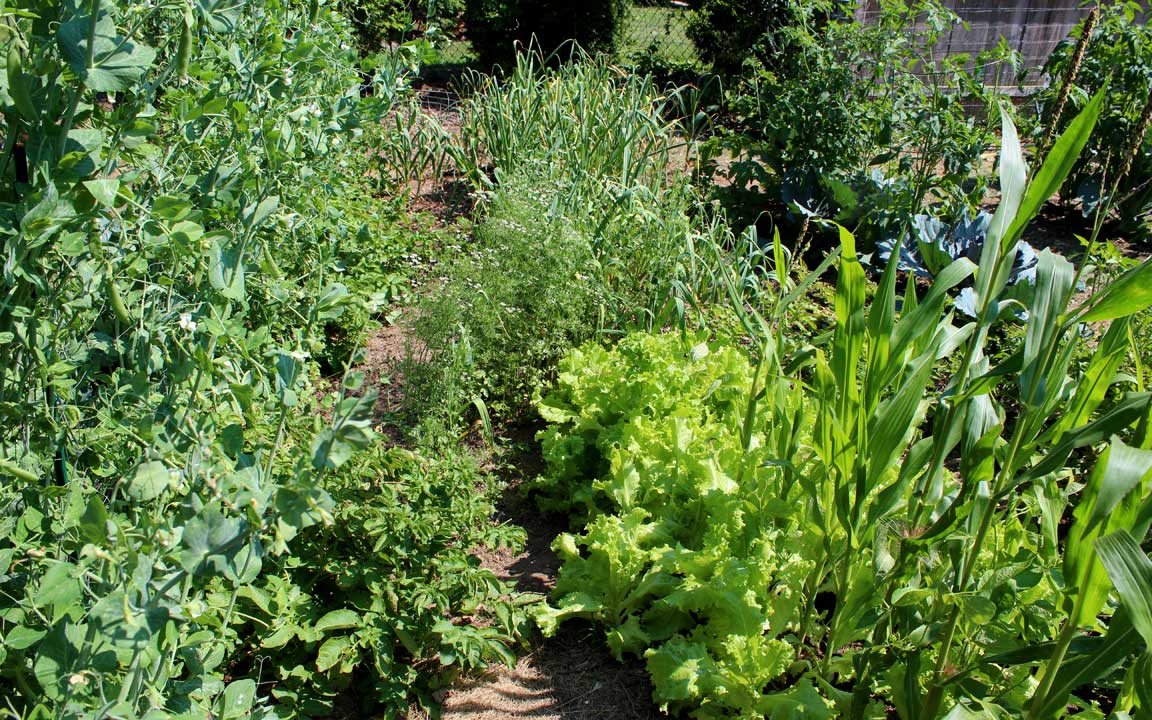 Now plants thrive in our rich soil.
Now plants thrive in our rich soil.
Patience can be more effective than chemicals
I never used any pesticides even when I was losing some crops. Instead, I concentrated on making the plants healthier. It took patience – I almost gave up on growing crops like cabbage and cauliflower because our aphid problem was so bad. But over the years I planted more perennial flowers and bushes in the yard. Things were getting greener all around the yard, making a great habitat for predators.
To help things along, I introduced praying mantises. I also started spacing apart trouble plants like broccoli, kale and cauliflower, so I could remove infested plants before the pests spread.
Then things started to take a turn. I was checking for potato beetles one year, and found nothing but spiders. And this year, I’m finally seeing a lot of praying mantises. These predators took time to establish, but now take care of our pests – including aphids.
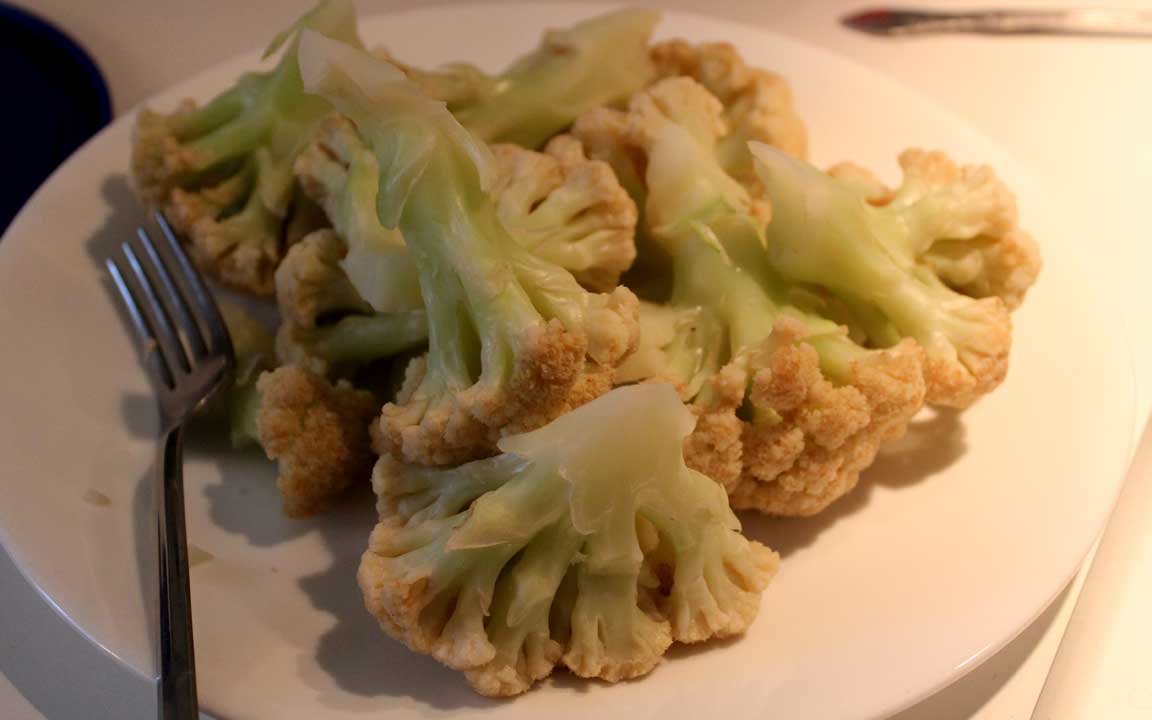 Fresh steamed and aphid free 🙂
Fresh steamed and aphid free 🙂
Of course, not everything is perfect. This year for example, I tried some new varieties of winter squash and a new pest showed up to chomp on their stalks. I was tempted to spray the bases of the plants, but I saw spiders going to town on the flies. Instead of spraying and killing beneficial spiders and bees, we’re letting nature take its course. We probably won’t get much winter squash, but next year I’ll try a different variety, and our predators will be back with reinforcements.
Maybe I could have saved some crops by spraying, but overall, l spend less time and money per crop by refraining. I like being a lazy farmer, and I get to see improvements every year as more friendly critters move in.
Raising chickens in a neighborhood
We really kicked things up to urban farm level when we got our chickens. Having chickens on a quarter acre plot in a neighborhood used to seem ridiculous. Then we stayed on an urban farm during a trip to Asheville, NC. They had bees, chickens, rabbits, and ducks – all on a tenth of an acre. We decided to go for it.
The chickens helped complete our little ecosystem. We saw results right away as they eliminated our grub problem by feasting on the juicy beetles in our yard. We also feed them scraps from the garden and kitchen, and the spent grain from making beer. In turn, they make eggs and poop out excellent fertilizer. The scraps they don’t eat get fed to the compost along with the chicken shit and weeds. The compost feeds the garden which produces our veggies. The circle goes on, and it just gets better as we learn more. I love seeing our little ecosystem evolving and growing.
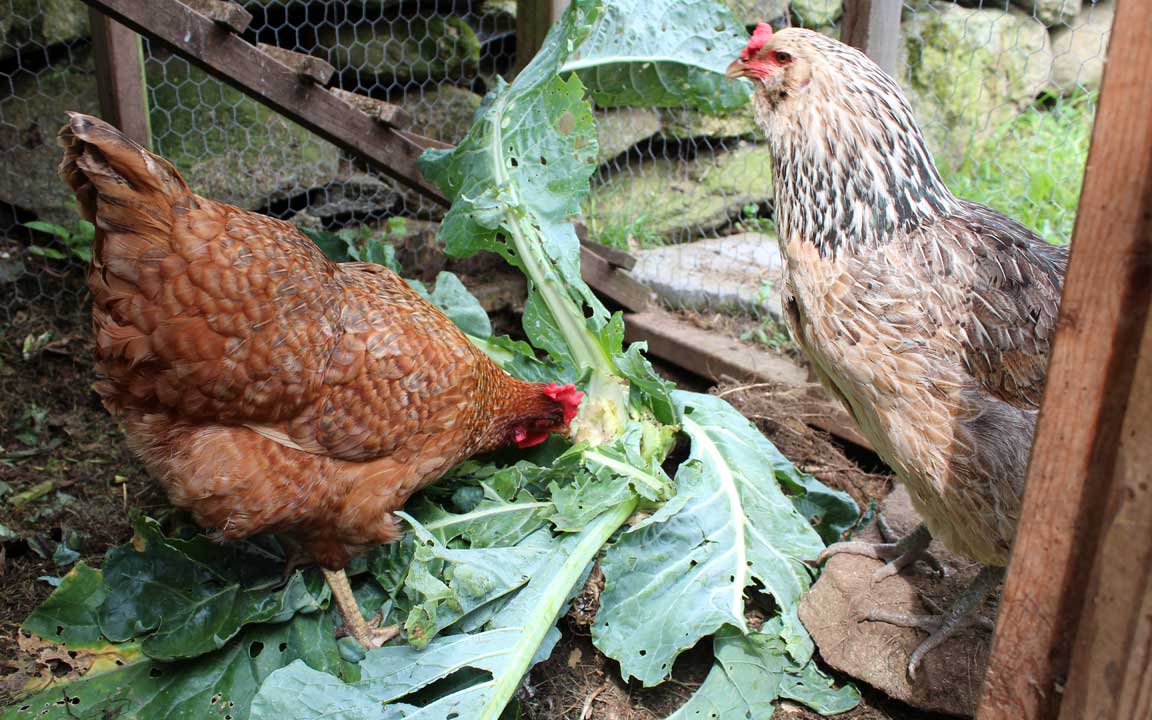 Chickens finishing off the rest of a cauliflower plant.
Chickens finishing off the rest of a cauliflower plant.
A grocery store in our backyard
The garden has become so bountiful that we can eat out of it everyday. The menu changes with seasons, and we’re always learning new ways to make use of our harvests. For example, we were in Spain this summer and found they top basic garden salads with tuna. We thought it was odd, but it turned out to be delicious. We returned home to a glut of salad greens and were lucky to have a new recipe to try.
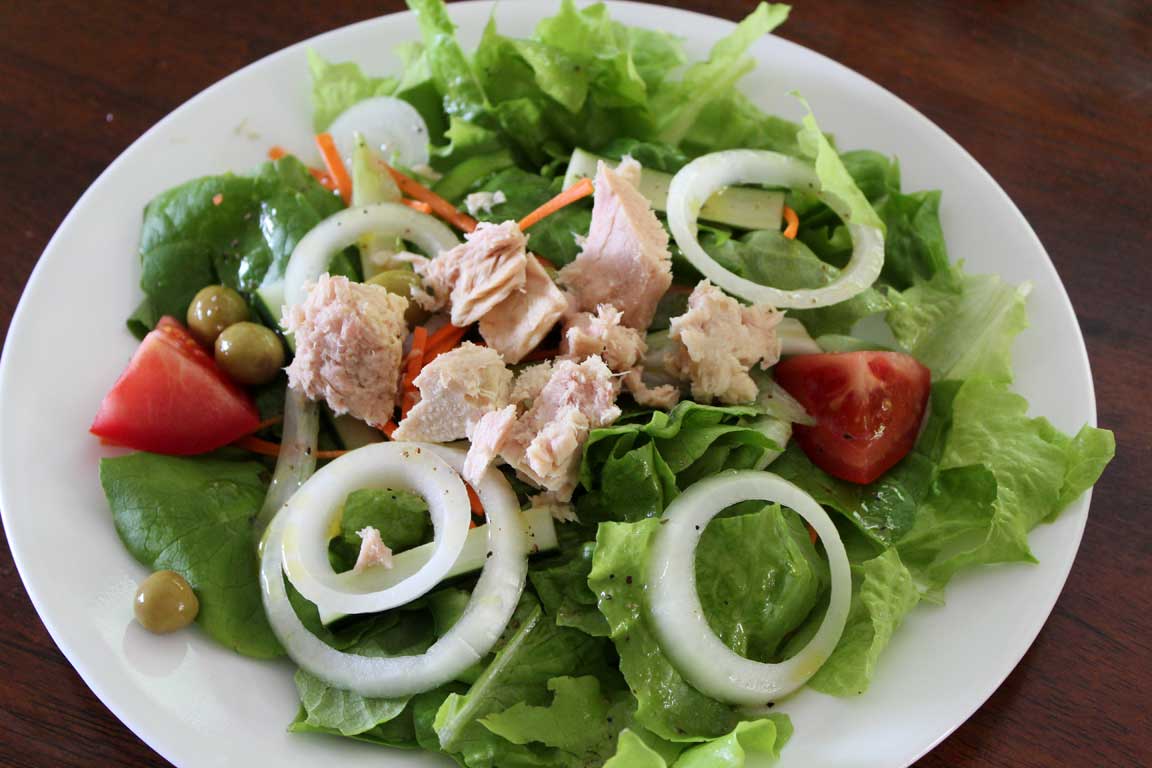 Salad with tuna, olives and garden goodies
Salad with tuna, olives and garden goodies
Everything is super fresh, and we don’t have to go anywhere. When it’s time to eat, I just pop into the garden and grab what we need. No need to drive to a store – our food is literally garden to table.
Eating from the urban farm all year
We’ve also been learning to store better. When our lettuce was getting close to bolting, I picked, washed, and stored the final harvest in my ultra efficient fridge. Now the homebrews have some company, and we have fresh salad for a few extra weeks. I can also store cabbages in the fridge for months at a time.
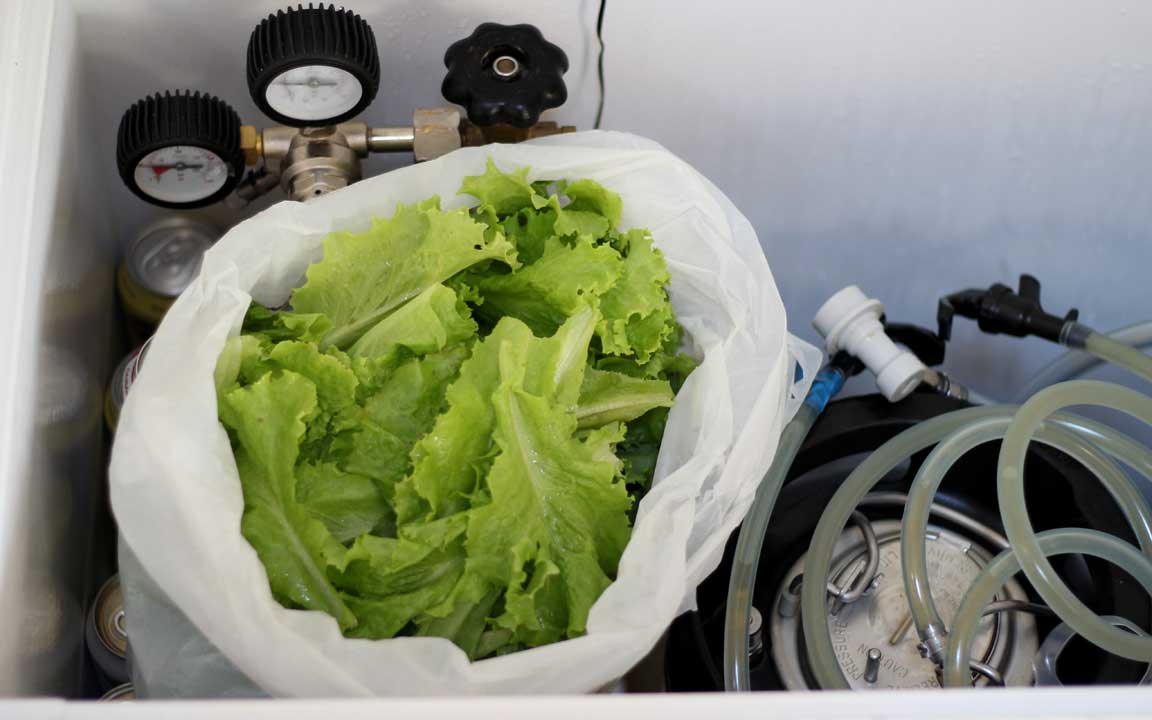 Storing excess lettuce in the keezer
Storing excess lettuce in the keezer
We also get bumper crops of garlic which stores really well.
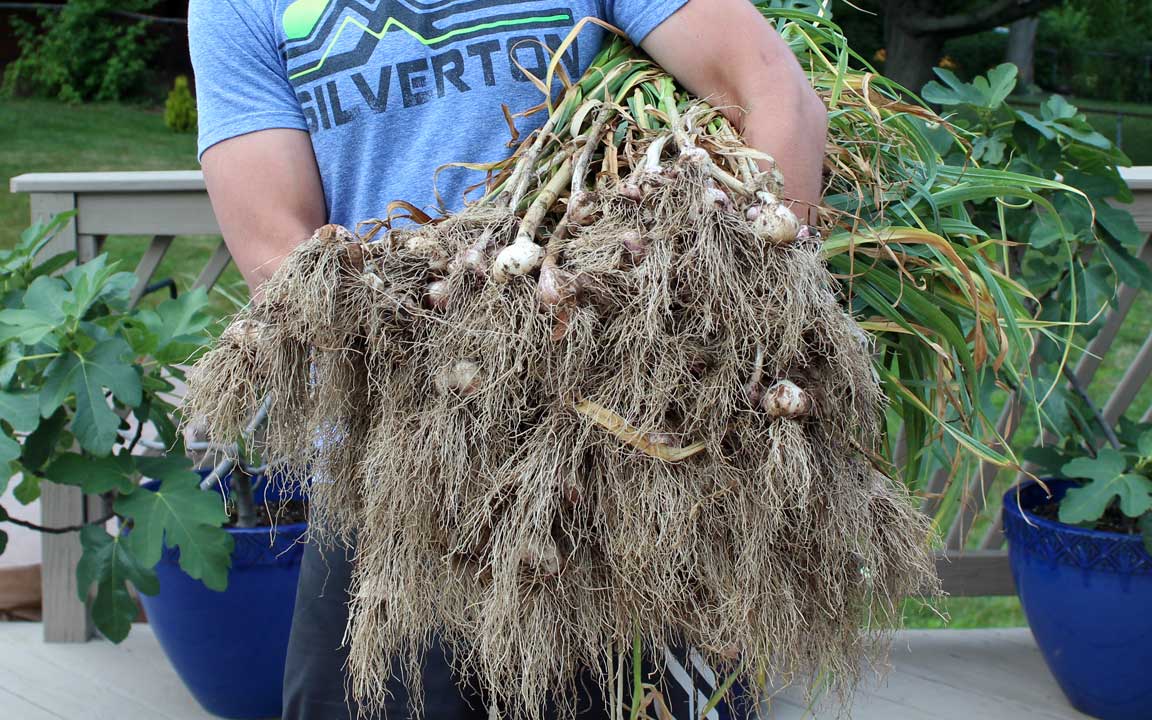 Garlic harvest
Garlic harvest
We grew 4 lbs last year, and by taking the time to cure them properly, we had garlic last through the entire year. This year, we harvested and cured 7 lbs.
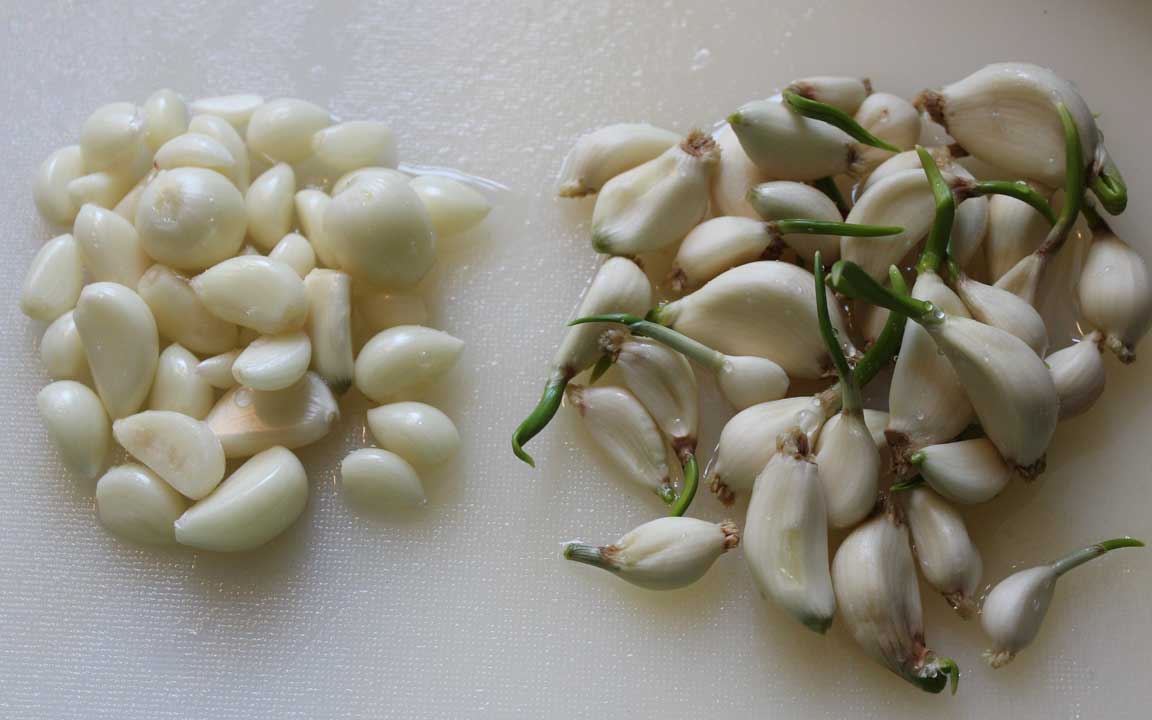 Fresh garlic next to our stored garlic from last year.
Fresh garlic next to our stored garlic from last year.
The garden is so fertile that we even get some bonus crops coming up on their own. Last year, we had a ton of Frankensquash which we ate well into January. This year I got a bunch of fancy fingerling potatoes that came up on their own. I harvested a bucket of potatoes that I never even planted. Kept in a cool, dark place, they will keep well into winter.
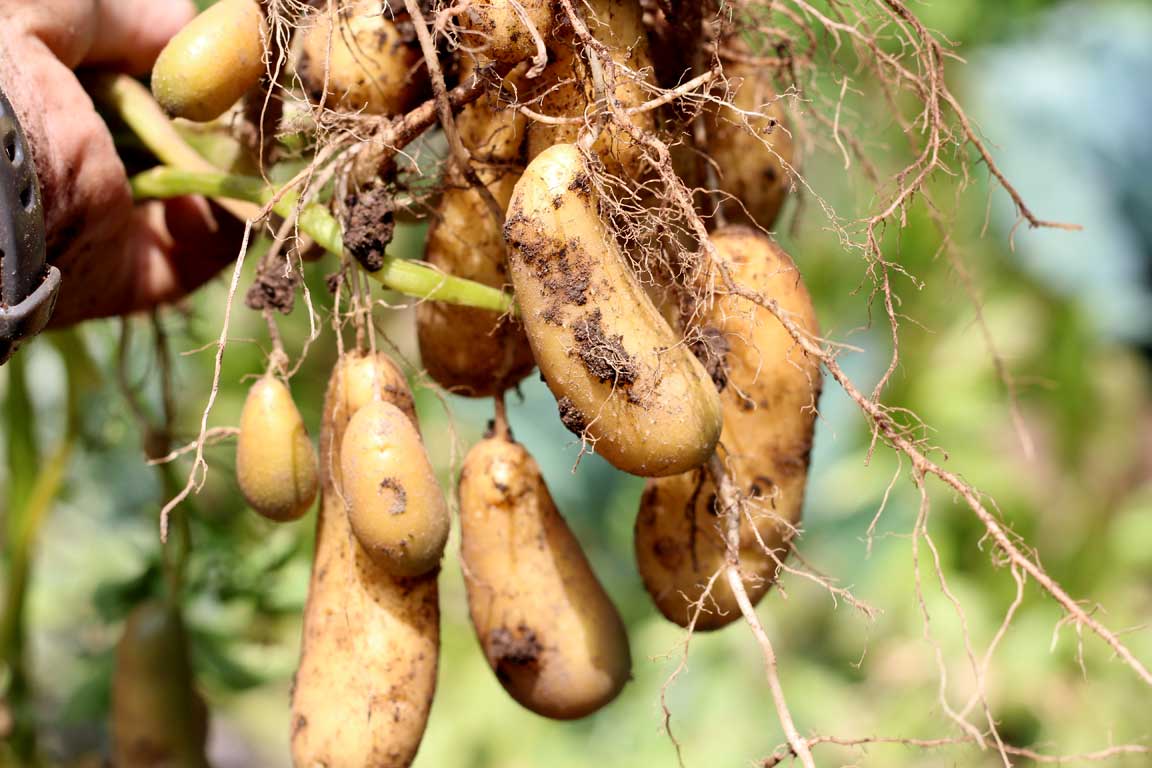 Rogue potatoes
Rogue potatoes
One final task – eat it all!
Of course we try to eat as much as we can now. Dinner usually includes two or thee sides of garden veggies. My latest favorite has been BBQ pork ribs with potatoes, steamed broccoli and cauliflower, and a fresh garden salad.
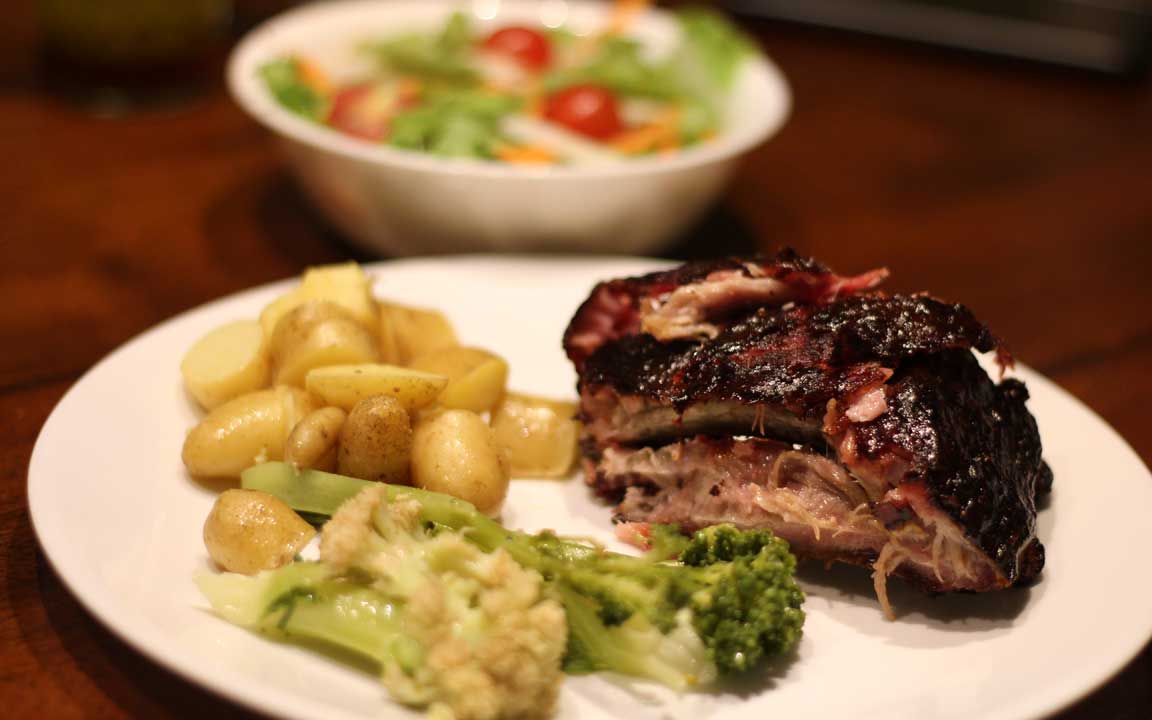 Garden veggies with a side of ribs
Garden veggies with a side of ribs
While I love to travel and have a hoard of other hobbies, I can spend 90% of my time at home during the growing season. There are always new crops to plant, harvest, or process. Weeding is even fun now that it feeds both the chickens and the compost pile.
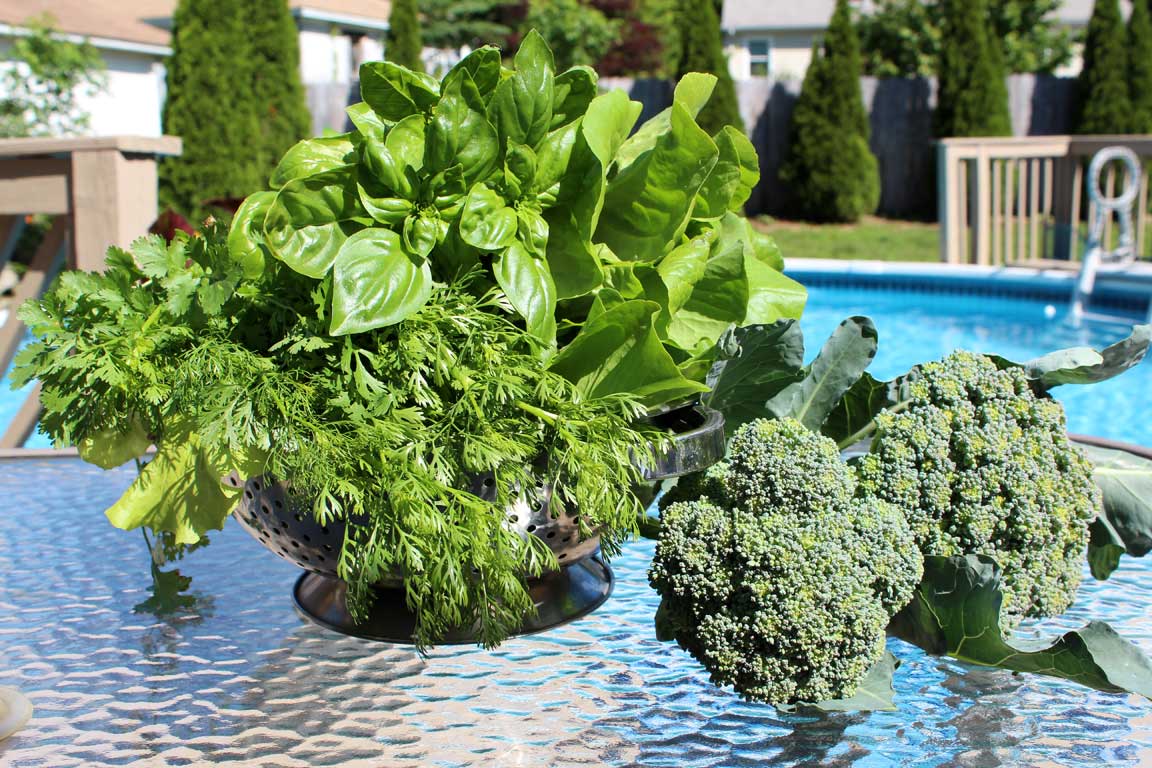 Lettuce, basil, cilantro and broccoli
Lettuce, basil, cilantro and broccoli
Anyone can find a way to grow their own food
We grow enough food for ourselves on a small section of our yard. Some people even make a living by changing entire backyards to urban farms and growing in neighbors’ backyards. I’m excited to see this spreading and empowering more people to get into growing delicious, healthy food in a hyper local and sustainable fashion.
If you’ve been thinking about growing your own food, just get started now. I’ve talked to people who grow successfully in tiny yards, on apartment balconies, indoors, and even using other people’s yards. Maybe you won’t have a ton of crops right away, but it’s a learning process, and the longer you do it, the more successful you’ll be. It doesn’t take much land to grow serious amounts of food, and there’s nothing like pulling lunch out of your own yard.